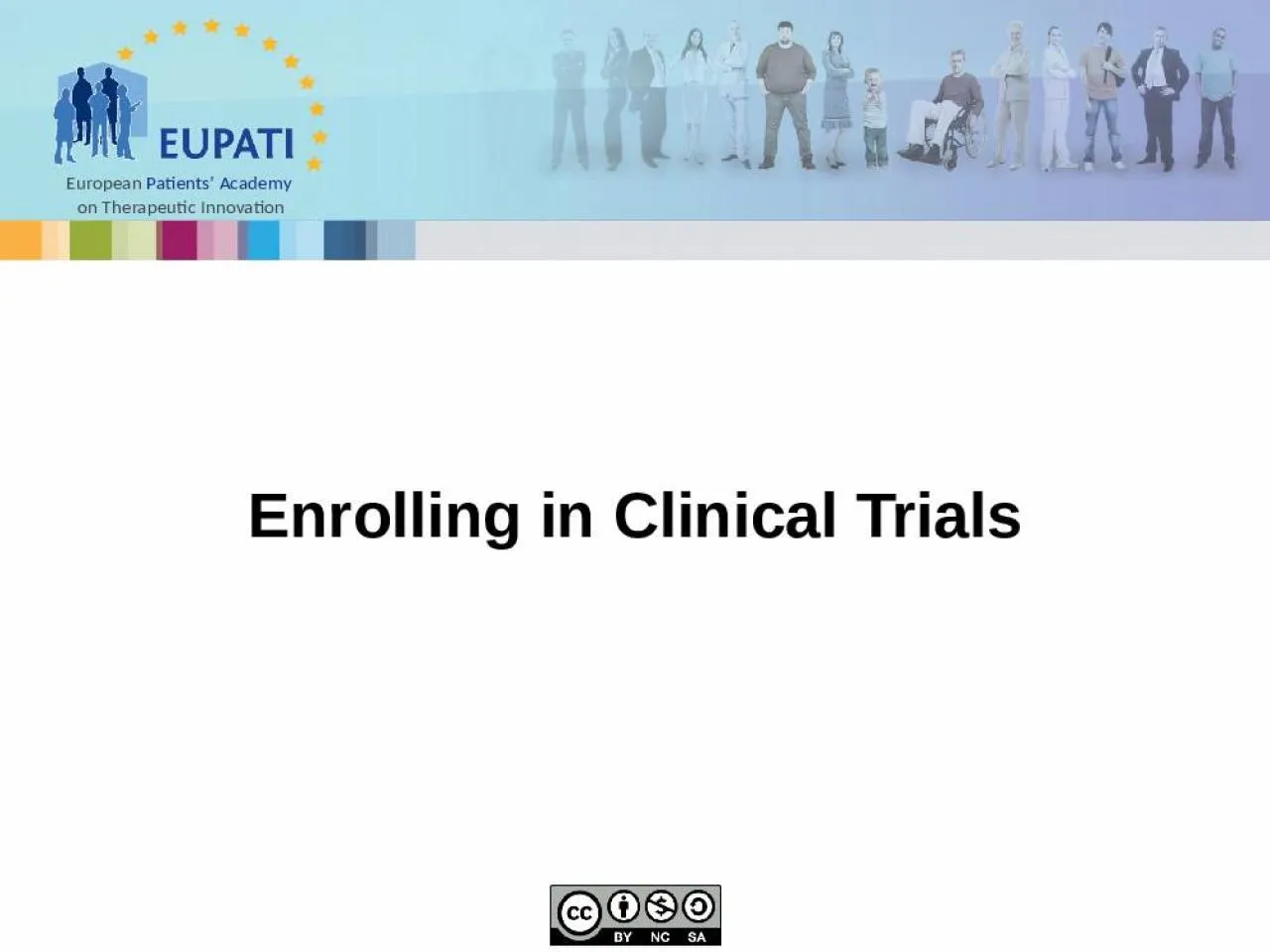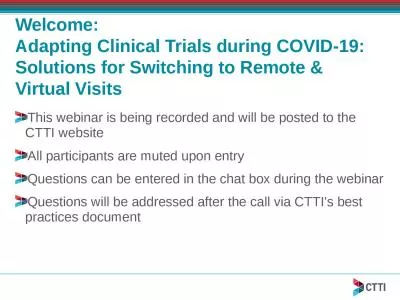PPT-Enrolling in Clinical Trials
Author : lam | Published Date : 2022-05-14
Before participants can enrol in a clinical trial they must be recruited screened and give their informed consent The process of enrolling in clinical trials
Presentation Embed Code
Download Presentation
Download Presentation The PPT/PDF document "Enrolling in Clinical Trials" is the property of its rightful owner. Permission is granted to download and print the materials on this website for personal, non-commercial use only, and to display it on your personal computer provided you do not modify the materials and that you retain all copyright notices contained in the materials. By downloading content from our website, you accept the terms of this agreement.
Enrolling in Clinical Trials: Transcript
Download Rules Of Document
"Enrolling in Clinical Trials"The content belongs to its owner. You may download and print it for personal use, without modification, and keep all copyright notices. By downloading, you agree to these terms.
Related Documents














